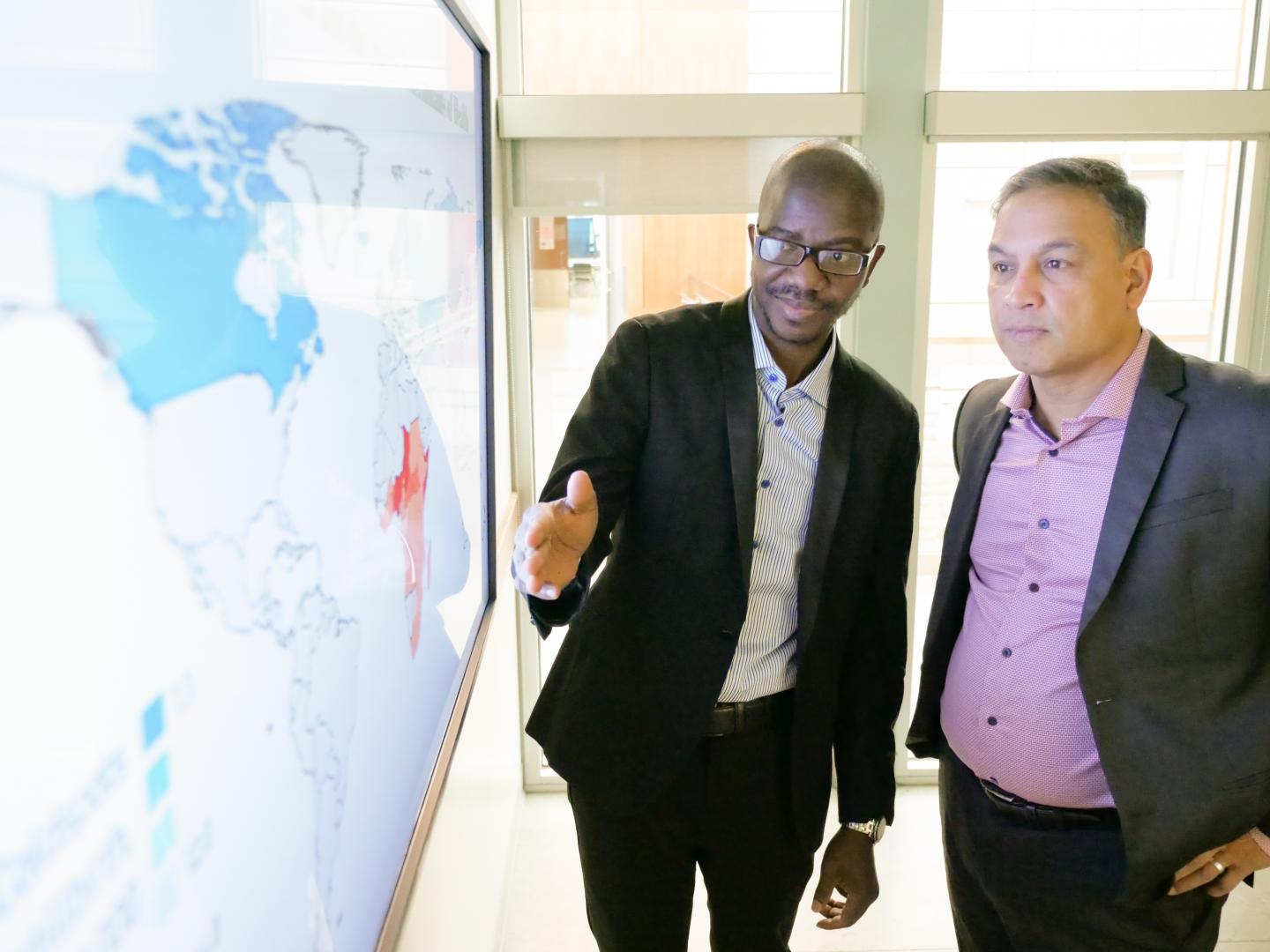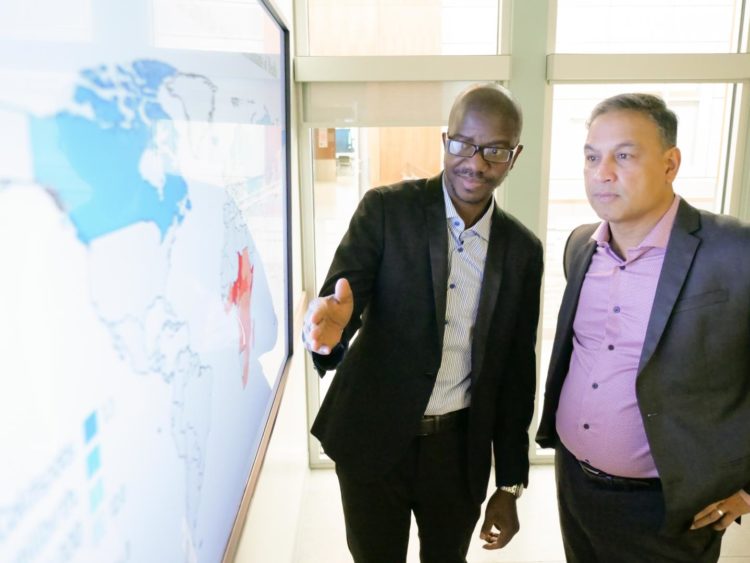
Credit: Daniel Hallen for The University of Saskatchewan.
In the first comprehensive study mapping global patterns of stillbirth rates, University of Saskatchewan (USask) researchers have found that pregnant women who are poor and have lower access to education and employment are more likely to experience a child’s death at delivery.
“Our research offers a better understanding of where stillbirth rates are higher, and what the social causes underlying stillbirths are, not just taking into account the medical factors as most studies do,” said USask community health and epidemiology researcher Nazeem Muhajarine, whose findings have been recently published in Nature Scientific Reports.
The model developed by the USask researchers shows that stillbirths are more likely in countries where gender inequality is high–where women experience financial challenges and have less access to education and employment opportunities compared to men.
While stillbirth rates are relatively understudied, according to the World Health Organization every year almost three million children reportedly die before or at delivery, but the majority of these deaths are preventable.
“Many mothers-to-be experience stillbirths around the world and this loss takes a personal toll on the families and the women who are preparing to give birth and see their dreams dashed. We hope we will help these women with our research,” said Muhajarine.
Focusing on data from 194 countries, Muhajarine and his PhD student Daniel Adeyinka’s model shows which social causes in addition to gender inequality have a potential link to stillbirth rates worldwide. They found that stillbirths rates are more likely in countries where pregnant women have higher rates of anemia (iron deficiency caused by low nutrition), limited pre-birth healthcare, and lack of access to skilled professionals such as nurses, midwives or doctors for delivering the babies.
“We hope that our study will provide policy makers with information for improving women’s social conditions so that fewer and fewer women will experience stillbirths around the world,” said Adeyinka.
The USask model, which used novel artificial intelligence software, also mapped the “hot spots” of highest stillbirth rates, a cluster of 37 countries in Africa and Southern Asia. Nigeria and Pakistan led with 43 deaths for every 1,000 children born. This is an average four times higher than the 2030 national target of 12 deaths per 1,000 births of the World Health Assembly Every Newborn Action Plan (WHA ENAP). The researchers also identified “cold spots” of low stillbirth rates, mostly in in Canada, Europe and Northern Asia, oscillating between one and 12 deaths per 1,000 births.
“A cultural change is needed in ‘hot spot’ countries around women’s conditions,” said Muhajarine. “Not only should we offer better hospital services and more access to skilled healthcare professionals, but we also need to make sure that women and girls have access to enough food, better education and work opportunities, and are not married off too early.”
Muhajarine and Adeyinka ran simulations to predict how to improve children’s survival at birth, especially in “hot spot” countries. The researchers found that to decrease stillbirths worldwide by 44 per cent would require improving women’s access to education and by 51 per cent, and improving mothers’ nutrition by 59 per cent compared to current worldwide rates.
The researchers also recommend that pregnant women should have more access to pre-birth health services and skilled healthcare professionals at delivery–an average increase of 27 per cent on healthcare services and 26 per cent on access compared to current rates.
Adeyinka will apply this study to design recommendations that could inform policy makers in Nigeria, his home country, where stillbirths are the second highest in the world.
“The time to act is now,” said Adeyinka. “Stillbirths are more expensive than successful deliveries. On top of saving lives, if we lower stillbirths, the money could be invested in improving mothers and children’s health and on the healthcare system as a whole, including in Nigeria.”
###
The researchers used data from the United Nations and the World Health Organization (WHO) databases. University of Nevada public health PhD student Babayemi Oluwaseun Olakunde contributed to the study.
Media Contact
Victoria Dinh
[email protected]
306-966-5487
Related Journal Article
http://dx.





